The sweet, the savory and the sea: the food of Pangasinan
View Biyahe ni Drew: Pangasinan Food Trip in a larger map
Many Metro Manila vacationers just pass through Pangasinan on their way to Baguio, but as the "Biyahe ni Drew" team discovered, the province is well worth a visit for its food alone!
This June on GMA News TV’s ‘Biyahe ni Drew’ Road Trip Series, the team is out to prove that you don’t need to spend on airfare to have a good time. There are many provinces and towns near Metro Manila that we often overlook, Pangasinan included. Before heading there, some of us on the “Biyahe ni Drew” team knew nothing about this coastal province just five hours away from Manila; however, ‘Biyahe ni Drew’ researcher and Pangasinan local Jerwin Ubaldo was convinced we’d love it there. And we did!
Here are our favorite culinary discoveries from our weekend in Pangasinan:
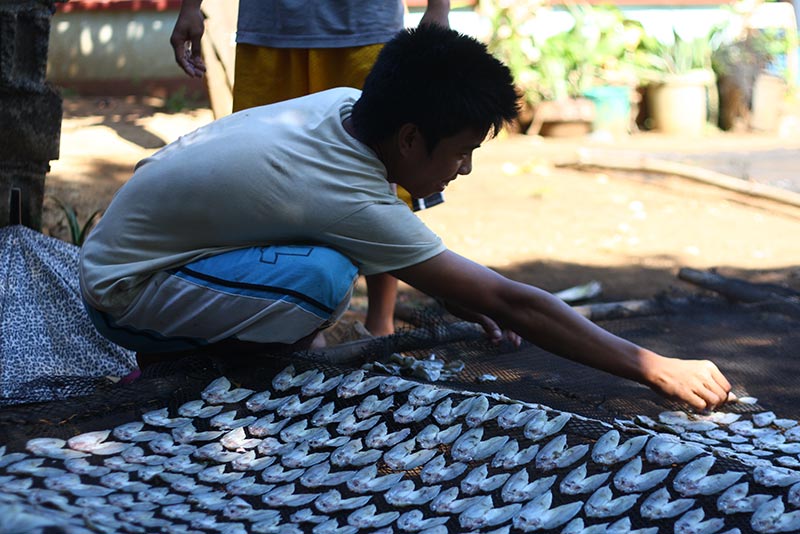
5) Danggit
Municipality: Bolinao
Sick of too-salty dried fish? Danggit from Santiago Island, Pangasinan is less salty than the kind usually bought in Manila. Coastal towns make large quantities of the breakfast favorite by using a manufacturing line-like system. Each person plays a part: Someone cleans the fish, someone soaks them in the salt solution, someone lays them out to dry and someone collects the fish when they’re ready for packaging.
We had breakfast on Santiago Island to try their famous danggit. It was fleshier than the flat, dried-up kind we were used to in Manila. The saltiness was just right, too; you didn’t need to drown the fish in vinegar to tone down the salt.
A kilo of Santiago Island danggit costs P395. And even if you’re not planning a visit to the island, they supply danggit to markets all over Pangasinan.
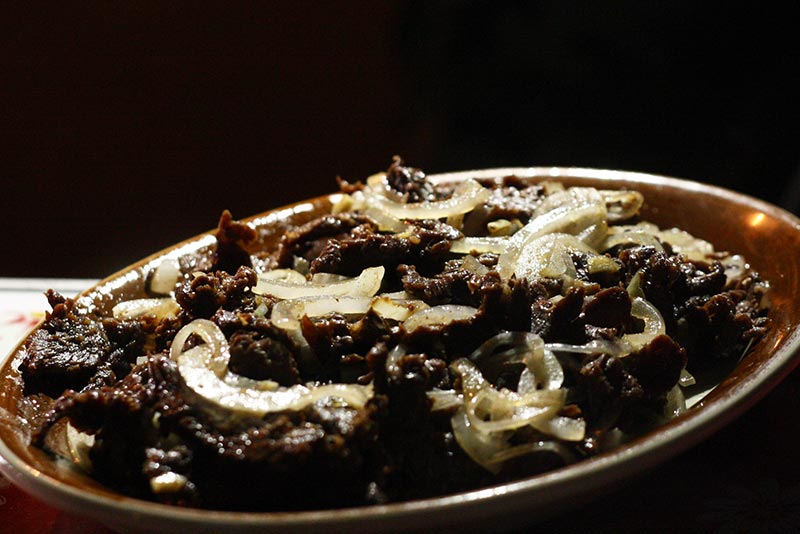
4) Pigar-pigar
Municipality: Dagupan
Galvar Street in Dagupan City comes alive at night, with diners eating at plastic tables set on the road and barkers calling at passersby to choose their restaurant. Competition is stiff, after all; every restaurant on this long street sells their own versions of pigar-pigar.
Pigar-pigar is a catch-all term for stir-fried beef served on the streets of Dagupan City as a late dinner or drinking food. Generally, P80 will get you 1/4 kilo of beef with garlic and onions; however, you can add P40 for cabbage.
The best pigar-pigar I’ve tasted was at Great Taste Restaurant along Gomez Street, just off Galvar. Unlike the street stalls, Great Taste is an actual sit-down restaurant with attentive staff and many variations on pigar-pigar such as Singaporean-style pigar-pigar and teriyaki pigar-pigar.
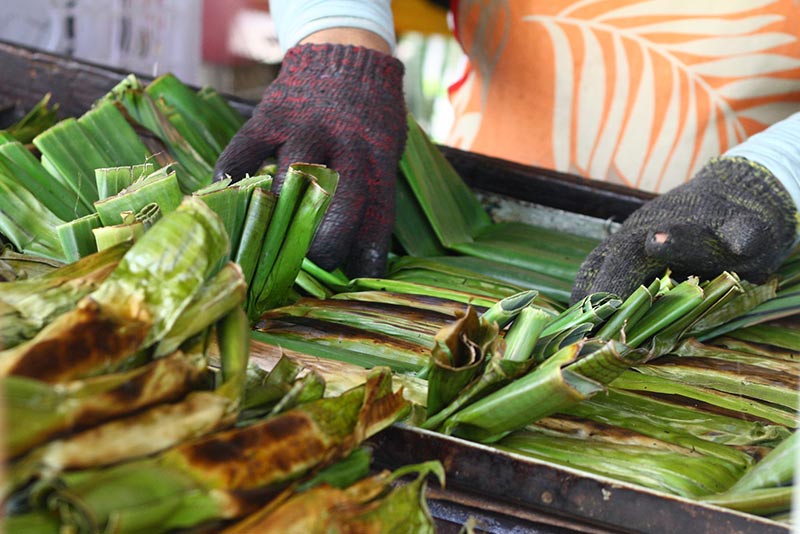
3) Tupig
Municipality: Villasis
While driving to Pangasinan, we stopped to get gas at Tarlac and bought tupig (grilled rice-and-coconut cake) from a street vendor. Do not make the same mistake we did.
The best tupig is in Pangasinan; the others do not even come close. We bought ours outside the Villasis Public Market and Bagsakan Center, which is the biggest, busiest market in the municipality of Villasis, Pangasinan. The long line of tupig stalls means competition is stiff. Thus, the quality is kept high and prices are kept low.
The tupig we bought in Tarlac was barely three inches long, tough and cost P25 for three pieces; in contrast, the original tupig from Pangasinan was at least five inches long, pleasantly chewy and and was dotted with chunks of coconut meat. The best part? It cost just P5 per piece.

2) Bangus (and other seafood, too)
Municipality: All
Pangasinan is often called the “bangus capital of the Philippines.”
In Dagupan, you’ve got sizzling bangus sisig from Great Taste restaurant (photo above) and kinilaw na bangus from Jacobo’s Seafood Grill for just P300 per dish. Fun fact: the latter restaurant is a simple but elegant restaurant built above an actual bangus fishpen.
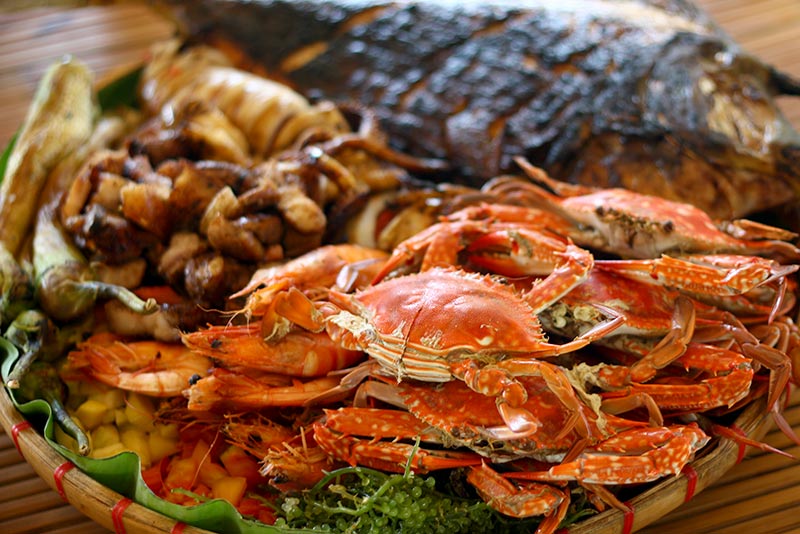 My favorite was the kinilaw na bangus. We’re used to firm fish like tanigue being used in the sour, vinegar-soaked dish, but the gelatinous fat of the bangus was a nice, chewy variation.
My favorite was the kinilaw na bangus. We’re used to firm fish like tanigue being used in the sour, vinegar-soaked dish, but the gelatinous fat of the bangus was a nice, chewy variation.
Along Bolinao’s Balingasay River, you can try massive inihaw na bangus at Sungayan Grill as well as sungayan, the large one-horned fish after which the restaurant is named. It sort of looks like a unicorn.
My favorite: the gigantic seafood platter overflowing with alimango, suahe, inihaw na pusit, sungayan and seaweed all on a bed of ensaladang mangga. At P1,300 and good for seven people, this is one of the best and yummiest deals in Pangasinan.
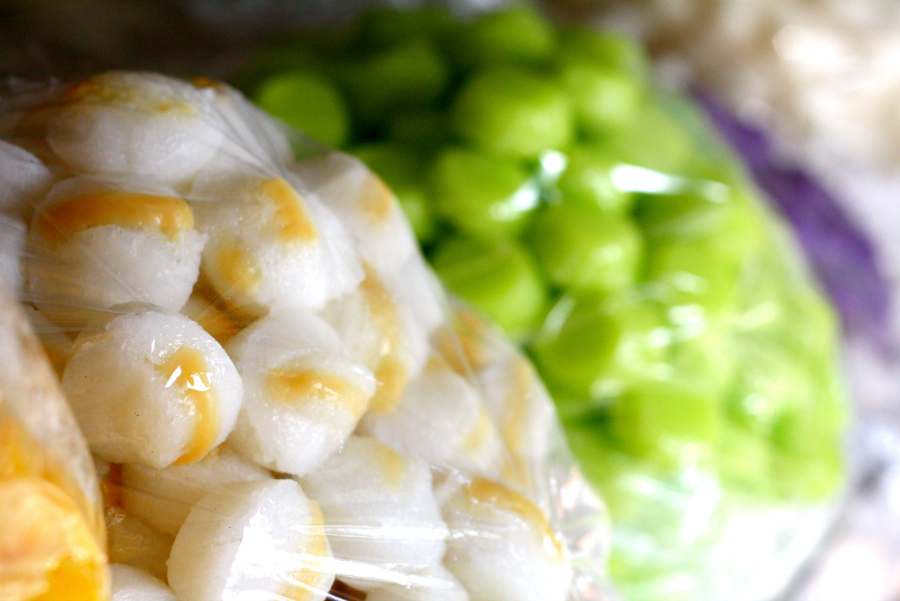
1) Puto Calasiao
Municipality: Calasiao
If you tell your friends you’re going to Pangasinan, get ready to hear a chorus of “Ayyyyy, puto calasiao!” Everyone wants a piece of these steamed rice cakes which are somehow softer and fluffier than any you’ll find in Manila. These snacks are so legendary that they have their own festival. Last year’s Calasiao Puto Festival, held in December, featured a month-long trade fair. There were also exhibits and cooking demos on the “1001 Ways to Serve Puto,” as well as pageants to decide the Puto King and Queen and the Miss Gay Puto Festival Queen.
Get yourself a kilo at the town of Calasiao, Pangasinan. Aside from the plain puto and traditional flavors like cheese and ube, you’ll find brightly colored puto flavored like pandan, banana and strawberry. Looking for the “best vendor” isn’t a problem. Just head to the town market, where a whole line of shops separate from the main area sell nothing but puto and other kakanin.
Vendors say the puto will keep for three days, but in our experience, it shows early signs of spoilage as soon as one day after purchase. Since refrigerating the puto turns it hard and ruins the texture, the whole ‘Biyahe ni Drew’ team ate as much of our slightly watery (that’s a bad sign, folks!) puto stash as we could before the whole bag went bad.
Lesson learned: Stuff yourself with puto calasiao for as long as you’re there—you’ll be craving for more when you go back home.
--
For more road trips and awesome food, watch ‘Biyahe ni Drew’ every Friday, 10 p.m. on GMA News TV. You may also follow the show on Twitter and Facebook for daily travel tips and live updates.




